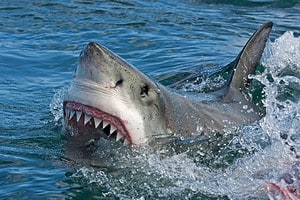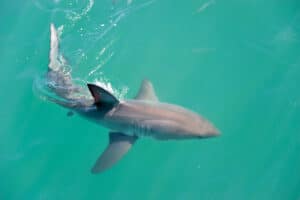This mesmerizing and peaceful clip contains a sharp reminder of the hazards of getting into the ocean. A female diver is protected by a metal shark cage as she floats in crystal-clear blue waters. But she is not alone.
As well as the shoals of small fish that have gathered to investigate, a great white shark is also checking out what is going on. As the video shows, getting investigated by a great white shark is not a pleasant experience at all!
Watch The Heart-Stopping Moment In This Clip Below!
How Do Sharks Normally Behave Around Humans?
There is a huge range in shark reactions to humans. Some will actively avoid us, some will ignore us, and some will interact with us. An interaction can be anything from circling us to an actual physical attack. Videos like this are scary. However, you are far more likely to be struck by lightning than you are to die from a shark attack!
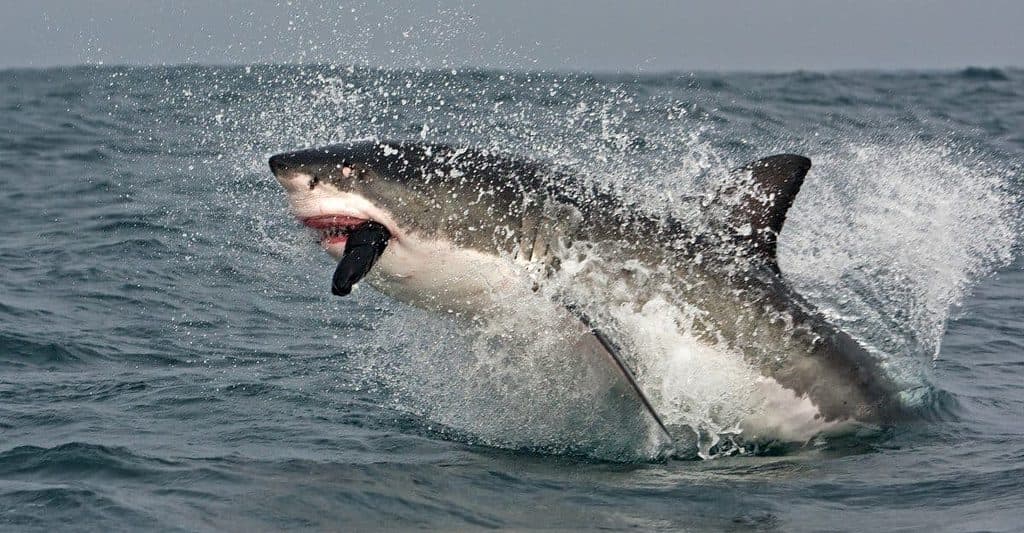
Sharks have varied reactions to humans – some will actively avoid us, some will ignore us, and some will interact with us.
©Martin Prochazkacz/Shutterstock.com
No one knows exactly why sharks interact with us, and there are likely to be several reasons. One of the most popular is that sharks are inquisitive and are simply trying to find out what we are. Unfortunately, a key investigative strategy for a shark is biting. Given that many sharks have sharp teeth, that can result in serious injuries for the human.
What Eats Great White Sharks?

Orcas are considered an apex predator and actively hunt great whites for their liver.
©slowmotiongli/Shutterstock.com
Orcas which are commonly called killer whales, are super-skilled hunters and one of the top predators in the ocean. Despite being part of the dolphin family, they are often called “whales.” Their diet includes fish, squid, seals, sea birds, and even whales larger than themselves.
Killer whales are the only known predators of great white sharks. In fact, recent research has found that there are some orcas that actively hunt and kill great white sharks specifically for their liver. The liver contains a vast amount of iron which could sustain a killer whale for a single day.
These intelligent mammals are truly the apex predators of the sea.
What is a Normal Diet For a Great White Shark?
The great white shark, a formidable predator of the ocean, has a diverse and fascinating diet. While it primarily feeds on marine mammals such as seals and sea lions, its menu also includes fish, squid, and other sharks. With their incredible hunting abilities, great whites typically employ two main strategies to secure their prey.
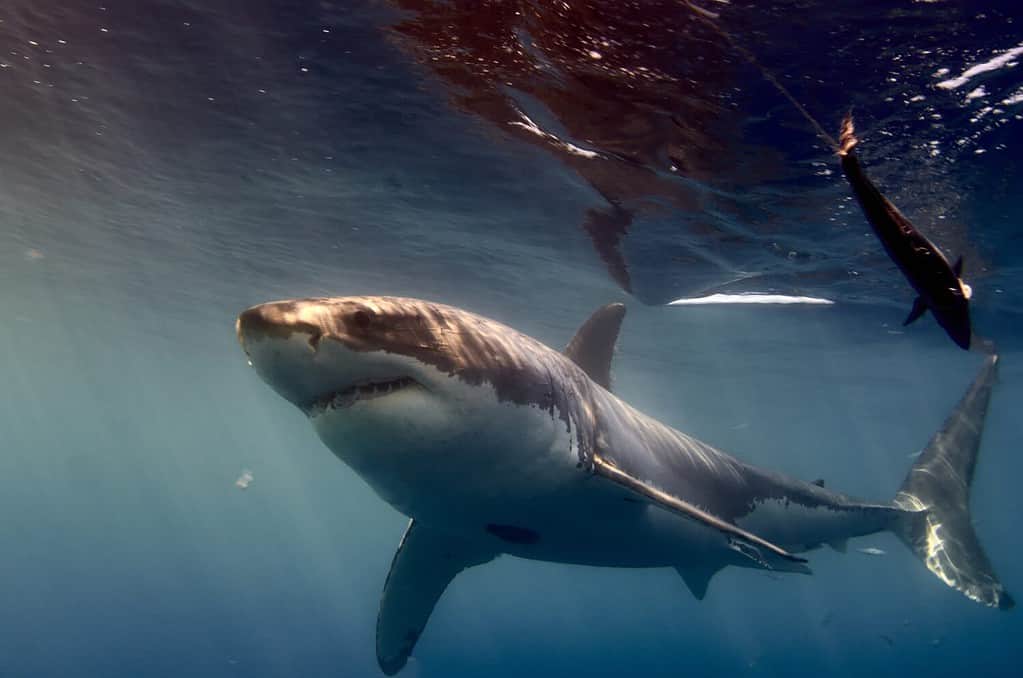
Because of their location, great whites normally eat fish.
©Wirestock Creators/Shutterstock.com
One method is known as “ambush predation,” where they patiently wait near the water’s surface before launching an explosive attack from below. Bursting out with astonishing speed and power, they disable their unsuspecting victims in one swift motion by delivering a powerful bite.
Another tactic employed by these apex predators is called “ram feeding.” In this approach, great whites swim at high speeds toward their prey before lunging upward with open mouths to engulf them. This technique is commonly used when targeting fast-swimming creatures like dolphins or tuna.
Contrary to popular belief fueled by sensational media stories, attacks on humans are rare occurrences for great white sharks. They do not actively seek out human flesh as part of their normal diet. Rather, such incidents are often cases of mistaken identity or curiosity-driven investigations resulting from poor visibility or confusing human activity with natural prey items.
How Large Can A Great White Shark Get?
Great white sharks are impressive apex predators, averaging 15 to 20 feet in length and weighing 2,000 to 5,000 pounds. “Deep Blue,” the largest on record, was over 20 feet long and weighed about 2.5 tons.
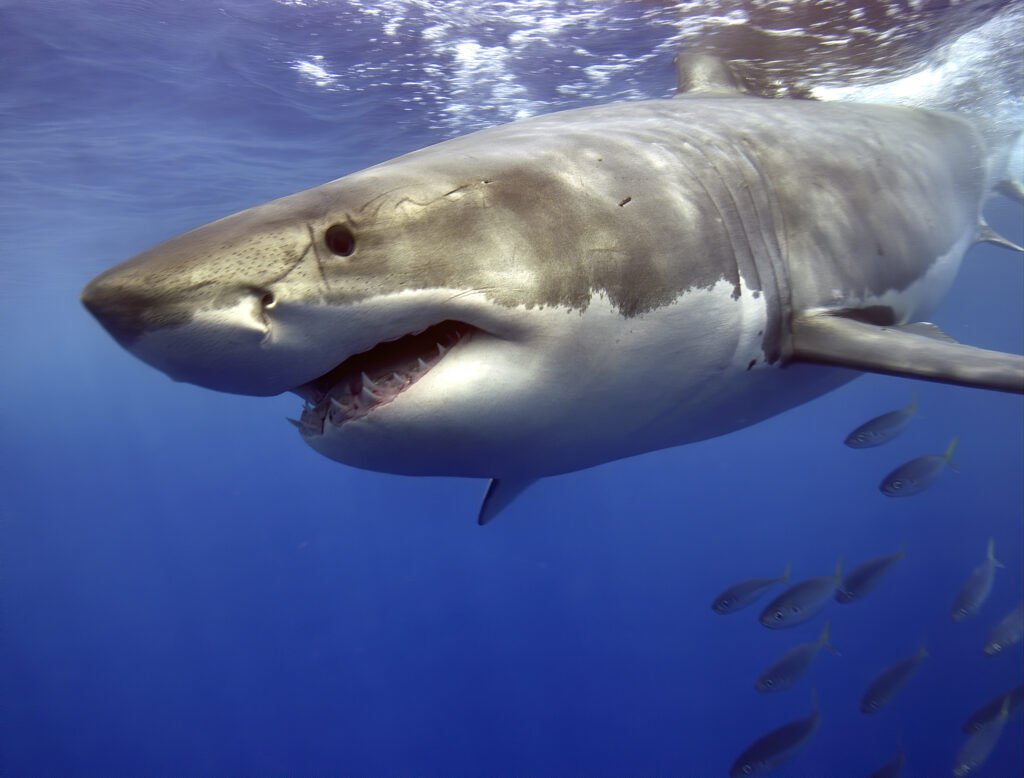
Great White Sharks can grow an average of 15 to 20 feet in length and weigh 2,000 to 5,000 pounds
©iStock.com/Martin Heyn
Beyond her size, Deep Blue revealed captivating insights into shark behavior, from hunting techniques that reflect adaptation to intriguing mating rituals.
Even her migration patterns unveiled the remarkable journeys of these enigmatic creatures, highlighting their importance in marine ecosystems.
How Can Divers Avoid a Shark Attack?
According to the Florida Museum International Shark Attack File, the most important thing to do if a shark approaches you when diving is to stay calm. The chances are it will swim away quite quickly. If you have been spear-fishing, quietly release your catch and move away from the area. Getting out of the water calmly is also a good idea.
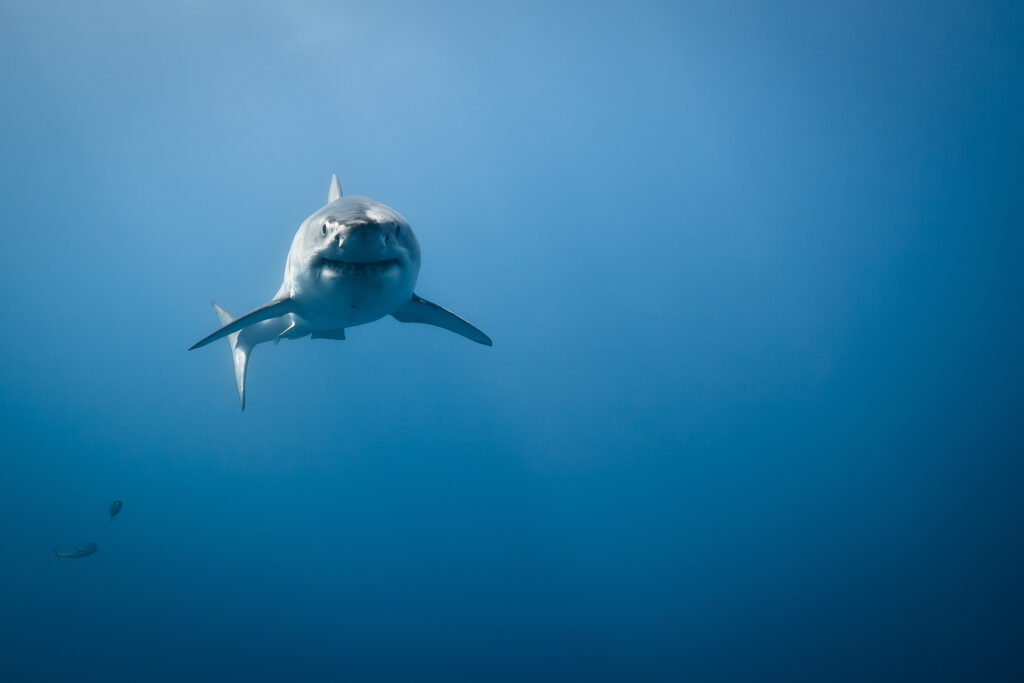
You are more likely to be struck by lightning than killed by a shark
©iStock.com/vladoskan
You can spot a shark acting aggressively by its movements. It will make rushes at you, hunch its back, lower its pectoral fins, and swim in a zigzag but rapid way. It may also swim with rapid up and down movements. If this happens, back up against a rock so that it is harder for the shark to rush at you and use whatever objects you have with you to fend it off.
Luckily, this diver was in a shark cage, so she was protected on all sides, but it was still a startling experience!
The photo featured at the top of this post is © Vincent Legrand/Shutterstock.com
Thank you for reading! Have some feedback for us? Contact the AZ Animals editorial team.




